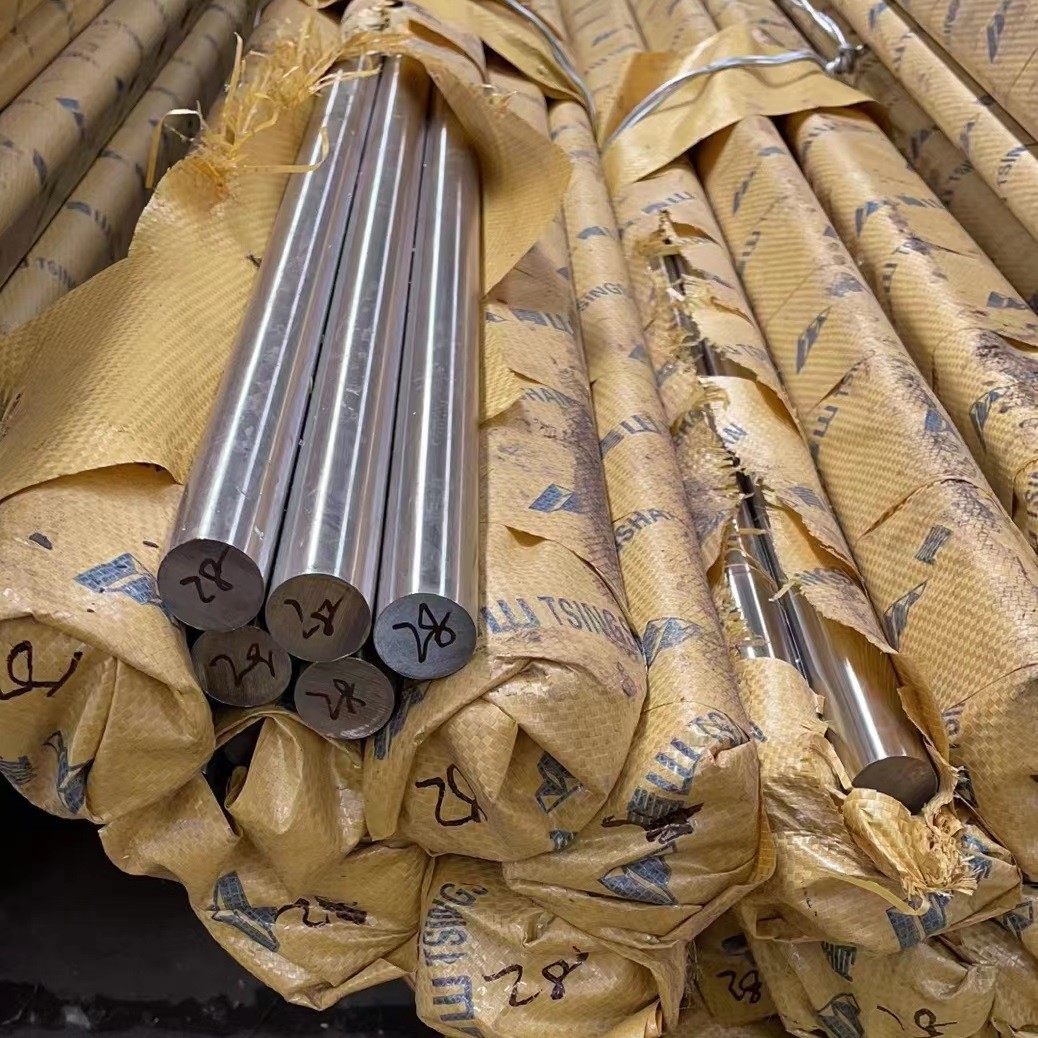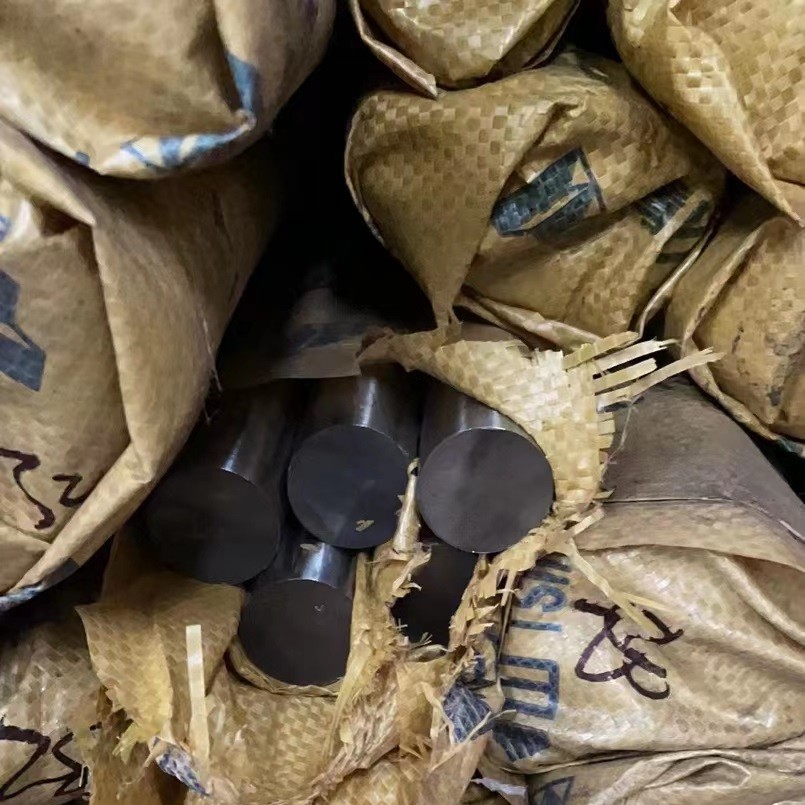JIANGSU MITTEL STEEL INDUSTRIAL LIMITED |
|
Verified Suppliers
|
|
Grade 304 Stainless Steel Grinding Bar High Precision Stainless Steel Shaft Tolerance H5 H7 H9
| Products | Stainless Steel Bar |
| Grade | 201 303 304 304L 309S 310S 316L 316Ti 317L 321 347 410 420 430 431 17-4PH 2205 2507 904L C276.etc |
| Finishing | Bright / Black |
| Diameter | 3 - 300mm |
| Tolerance | H5 H6 H7 H8 H9 H10 H11 H12 H13 |
| Length | 6m or custom cutting as request |
| Service | Cutting. Polishing, heat treatment |
| MOQ | 200 Kgs |
| Deliver time | 10 - 15 Days based on the quantity |
| Packing | wooden box, or packing as request |
| Loading Port | Shanghai Port. Ningbo Port |
| Other Shape | Round, Square, Flatness, Hexagonal , Angle, Channel |
| Company Type | Factory |
| 304 is a chromium-nickel austenitic stainless steel with good
strength and excellent corrosion resistance as supplied in the
annealed condition with a typical brinell hardness of
175.Characterised by high corrosion resistance in general
atmospheric corrosive environments it exhibits excellent resistance
to most oxidizing agents, general foodstuffs, sterilizing
solutions, dyestuffs, most organic chemicals, plus a wide variety
of inorganic chemicals also hot petroleum gases, steam combustion
gases, nitric acid and to a lesser extent sulphuric acid. It
displays good oxidation resistance at elevated temperatures and has
excellent weldability.
304 cannot be hardened by thermal treatment, but strength and
hardness can be increased substantially by cold working, with
subsequent reduction in ductility. It is now available with improved machinability (by calcium
injection treatment) which has little affect on corrosion
resistance and weldability, while greatly increasing feeds and/or
speeds plus extending tool life. Used extensively by the Food Processing, Dairy Equipment, Dying
Industry, Architectural Equipment, Hardware and Kitchenware
Manufacturing Industry, Chemical, Petrochemical and Transport
Industry etc.. Material non magnetic in the annealed condition, but can become
mildly magnetic following cold working. Annealing is required to
rectify if necessary. N.B. Optimum corrosion resistance is achieved in the annealed
condition. |
| Colour Code | Stocked Sizes | |
| Bright Green (Bar end)  | STOCKED SIZES | 3mm to 350 mm diameter. |
| Bar Finish | ||
| Peeled, Cold Drawn Turned and Polished, and Centreless Ground. | ||
| Related Specifications | |
| Australia | AS 2837-1986-304 |
| Germany | W.Nr 1.4301 X5CrNi 18 10 |
| Great Britain | BS970 Part3 1991 304S15/304S31 BS970 1955 EN58E |
| Japan | JIS G4303 SuS 304 |
| USA | ASTM A276-98b 304 SAE 30304 AISI 304 UNS S30400 |
| Chemical Composition | ||||||||
| Min. % | Max % | |||||||
| Carbon | 0 | 0.08 | ||||||
| Silicon | 0 | 1.00 | ||||||
| Manganese | 0 | 2.00 | ||||||
| Nickel | 8.00 | 10.50 | ||||||
| Chromium | 18.00 | 20.00 | ||||||
| Nitrogen | 0 | 0.10 | ||||||
| Phosphorous | 0 | 0.045 | ||||||
| Sulphur | 0 | 0.03 | ||||||
| *Molybdenum option addition. | ||||||||
| Mechanical Property Requirements - Annealed to ASTM A276-98b 304 | ||||||||
| Finish | Hot Finish | Cold Finish | Cold Finish | |||||
| Dia or Thickness mm | All | Up to & incl 12.7mm | Over 12.7mm | |||||
| Temsile Strength Mpa Min. | 515 | 620 | 515 | |||||
| Yield Strength Mpa Min. | 205 | 310 | 205 | |||||
| Elongation in 50mm % Min. | 40 | 30 | 30 | |||||
| Typical Mechanical Properties At Room Temperature - Annealed | ||||||||
| Finish | Cold Drawn | Other | ||||||
| Tensile Strength Mpa | 680 | 590 | ||||||
| Yield Strength Mpa | 500 | 240 | ||||||
| Elongation in 50mm % | 42 | 55 | ||||||
| Impact Charpy V J | 190 | 183 | ||||||
| Hardness | HB | 195 | 155 | |||||
| Rc | 13 | |||||||
| Elevated Temperature Properties | ||||||||
| 304 displays good oxidation resistance in continuous service up to
930 oC and in intermittent service up to 870 oC.Continuous service
however, between 430 oC and 870 oC is not recommended, nor is slow
cooling through this range due to the problem of intergranular
corrosion. 304L (low carbon type) can be employed to overcome this
problem.
Mechanical properties are reduced as temperature increases. | ||||||||
| Typical Mechanical Properties - Annealed at Elevated Temperatures | ||||||||
| Temperature oC | 20 | 430 | 550 | 650 | 760 | 870 | ||
| Short - Time Tensile Tests | Tensile Strength Mpa | 580 | 425 | 370 | 310 | 205 | 140 | |
| Yield Strength Mpa | 240 | 150 | 130 | 115 | 95 | 70 | ||
| Elongation in 50mm % | 60 | 40 | 35 | 32 | 33 | 40 | ||
| Creep Tests | Stress for % Creep in 10,000 hours Mpa | 115 | 50 | 15 | ||||
| Low Temperature Properties | ||||||||
| 304 has excellent low temperature properties with increased tensile and yield strength without loss of toughness in the annealed condition. | ||||||||
| Typical Mechanical Properties - Annealed at Zero and Sub-Zero Temperatures | ||||||||
| Temperature oC | 0 | -70 | -130 | -180 | -240 | |||
| Tensile Strength Mpa | 870 | 1000 | 1300 | 1400 | 1650 | |||
| Yield Strength Mpa | 260 | 300 | 350 | 375 | 450 | |||
| Elongation in 50mm % | 57 | 50 | 45 | 40 | 30 | |||
| Impact Charpy V J | 190 | 190 | 185 | 180 | 180 | |||
| The combination of high strength and toughness at low temperature allows this grade to be used in extremely cold climates or high altitudes, also for storage or liquified gasses at very low temperatures.304 even when cold worked will still have high strength and ductility at sub-zero temperatures. | ||||||||
| Cold Bending | ||||||||
| 304 has excellent cold working properties and cold bending can generally be carried out without difficulty, after cold working it will be mildly magnetic. Annealing is generally not required except following very severe cold working. | ||||||||
| Hot Bending | ||||||||
| Hot bending should be performed at 950 oC - 1100 oC, followed by annealing to restore optimum corrosion resistance. | ||||||||
| Corrosion Resistance - All Corrosion Types | ||||||||
| General Corrosion | ||||||||
| 304 has better resistance to general corrosion in most media than 303 or 302 grades but not as good as 316 and 316L grades. | ||||||||
| Stress Corrosion Cracking | ||||||||
| 304 has better resistance to stress corrosion cracking than 303 grade, but not as good as 316 or 316L grades. | ||||||||
| Pitting Corrosion / Crevice Corrosion | ||||||||
| 304 has better resistance to both pitting and crevice corrosion than 303 grade but not as good as the molybdenum bearing grades 316 and 316L etc. | ||||||||
| Intergranular Corrosion | ||||||||
| 304 has better resistance to intergranular corrosion than the
higher carbon grades 303, 310 or 302, but not as good as the low
carbon grades 304L and 316L, or the titanium stabilised grade
321.N.B. It is most important that oxygen is always allowed to
circulate freely on all stainless steel surfaces to ensure that a
chrome oxide film is always present to protect it. If this is not
the case, rusting will occur as with other types of non stainless
steel.
For optimum corrosive resistance, surfaces must be free of scale
and foreign particles. Finished parts should be passivated. | ||||||||
| Forging | ||||||||
| Heat uniformly to 1150 oC - 1200 oC, hold until temperature is
uniform throughout the section.Do not forge below 900 oC
Finished forgings should be air cooled. Finally forgings will require to be annealed in order to obtain
optimum corrosion resistance. | ||||||||
| Heat Treatment | ||||||||
| Annealing | ||||||||
| Heat to 1020 oC - 1100 oC, hold until temperature is uniform
throughout the section. *Soak as required. Quench in water to
obtain optimum corrosion resistance.*Actual soaking time should be
long enough to ensure that the part is heated thoroughly throughout
its section to the required temperature, 30 minutes per 25 mm of
section may be used as a guide.
Please consult your heat treater for best results. | ||||||||
| Machining | ||||||||
| 304 improved machinability is slightly more easy to machine than
improved machinability 316 or 316L grades. But more difficult to
machine than 303 free machining grade and most of the 400 series
stainless steels. It has a typical machinability rating of around
55% - 60% of free machining (S1214) mild steel.Due to its high work
hardening rate, cutting or drilling tools etc. must be kept sharp
at all times and not cause unnecessary work hardening of the
surface etc.
All machining should be carried out as per machine manufacturers
recommendations for suitable tool type, feeds and speeds. | ||||||||
| Welding | ||||||||
| 304 is readily weldable by shielded fusion and resistance welding processes, followed by air cooling giving good toughness. Oxyacetylene welding is not recommended due to possible carbon pick up in the weld area.Small sections may be welded without loss of corrosion resistance due to intergranular carbide precipitation, but larger sections or for service in the more extreme condition, post weld annealing is recommended. | ||||||||
| Welding Procedure | ||||||||
| Welding electrodes or rods should be 308 or *similar depending upon
application. No pre heat or post heat is generally required.*Please consult your welding consumables supplier. | ||||||||



